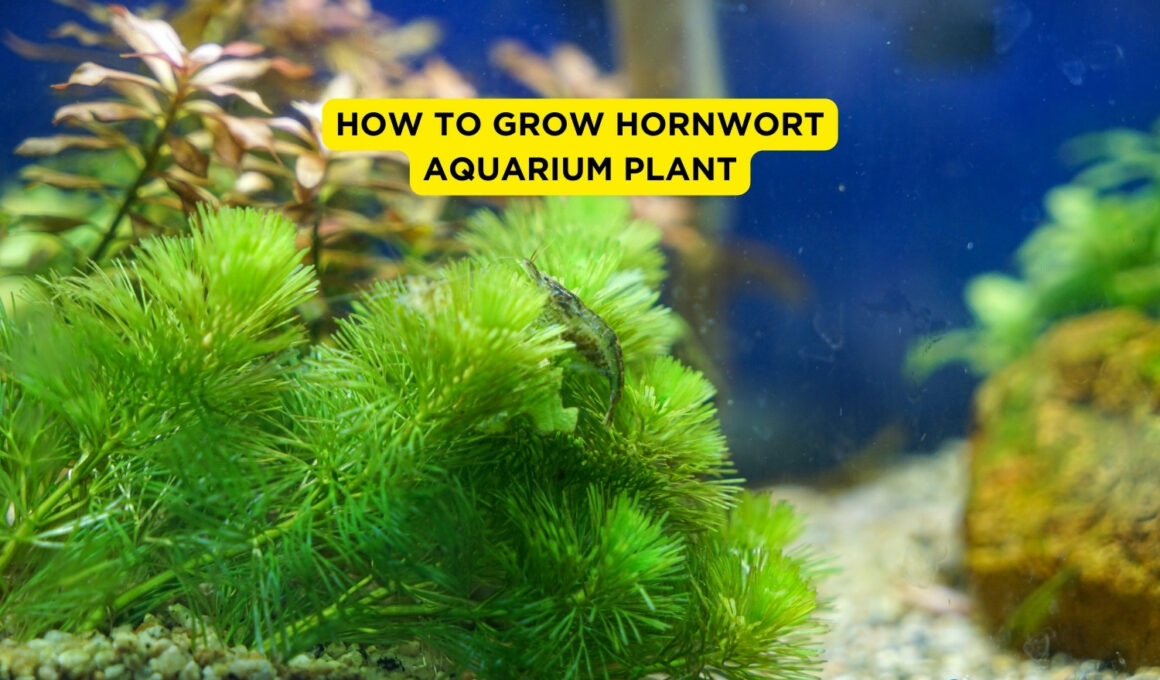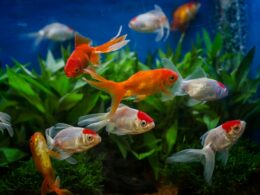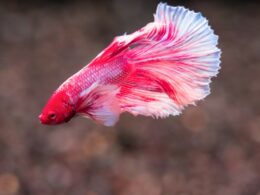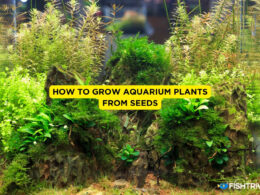In this article Show
Hornwort (Ceratophyllum demersum), also known as Coontail, is an aquatic flowering plant with a rapid growth rate. It is commonly found in North American marshes, streams, and lakes and has become naturalized in Europe.
Many other countries, including Tasmania, consider hornwort to be an invasive species and forbid its possession or transport.
Hornwort is one of the most common aquarium plants, and this can find it in almost any fish store. It can adapt to almost any kind of water and can withstand a wide range of temperature extremes.
It’s also commonly used in newly built fish tanks and fish tanks with poor water quality. When there is an ammonia spike in an aquarium, adding a big bunch of hornwort will help even out the water quality, and several fish tank crashes have been stopped by doing so.
This plant is rarely used in the showcase or highly noticeable fish tanks; it should be noted. It overgrows so that it’s challenging to aquascape with it, and once planted, it sheds needles like an old Christmas tree in the aquarium.
This article will teach you how to grow and care for the Hornwort Aquarium Plant. So, let’s get this thing going.
Also worth reading;
- How to Plant Water Lily Bulbs in an Aquarium
- 7 Reasons Why Your Aquarium Plants Are Dying: Always Check These
- How To Anchor Aquarium Plants
- How to Prepare Lava Rocks For An Aquarium
- Can Aquarium Plants Grow in Cold Water? What’s The Best Temperature
What Exactly Is Hornwort Aquarium Plant?
Many familiar names for Ceratophyllum demersum include rigid hornwort, hornwort, and coontail. It grows to be very tall in the wild, and it can easily hit the top of your aquarium or pond.
Hornwort is usually found floating on the water’s surface, but when rooted in the substrate, it takes on the appearance of a fuzzy underwater bush with several long branches or side stems.
The small, rigid leaves, which resemble pine needles, are bright green. Like water sprite and Java moss, Hornwort has thick vegetation that protects baby fish and shrimp from predators.
Hornwort is present on every continent except Antarctica and can live in a wide range of climates. It likes to expand in freshwater bodies that are still or slowly flowing and have many organic nutrients in the water column.
Fast-growing plants, such as hornwort, are excellent at “cleaning” aquarium water because they absorb waste compounds and use the water to produce more leaves. Hornwort will quickly grow 1-4 inches (3-10 cm) per week if given enough light and nutrients.
Hornwort: How To Grow This in Your Aquarium
Hornwort doesn’t have roots, so starting it on a substrate isn’t a choice. The plant’s leaf-like projections, on the other hand, will usually bind to gravel or sand and tie the plant to the tank’s rim.
If you force your plant to start in the substrate, it will almost certainly rot. As a result, try floating hornwort in water, which is both faster and easier. Then let the plant self-adhere to surfaces.
Instead of placing hornwort directly in the substrate, tie it to the glass near the tank bottom with suction cups and nylon thread or airline tubing to keep it in place.
Floating hornwort is simple to grow; simply place it in the tank and wait for it to flourish. The plant can pollinate successfully underwater and continue to grow without the need for human intervention—hornwort blooms with tiny flowers, which bloom in clusters in some plants.
There are no special requirements, but due to the plant’s rapid growth, hornwort depletes nutrients in the fish tank rapidly, so fertilizer may be required on occasion.
How To Care For Your Hornwort
Hornwort can grow in a wide range of temperatures and light conditions. Lighting should be kept low to medium and should only be used for around 8 hours a day.
If the hornwort grows much longer, it will develop a long stringy appearance with wide unsightly gaps between the needles.
It can be planted or left to float freely, but planting causes the plant’s lower parts to die. When inserted in the substrate, it develops a root-like structure, but as it loses needles near the plant’s base, it quickly becomes unattractive. As a result, it’s always better to simply let the plant float in the tank rather than planting it in the substrate.
1. Maintenance
It is well known for its rapid growth. Since it is based on several variables, there is no exact growth rate, but it is not unusual to grow five or more inches in a week.
Ensure that the plant receives a high intensity of light to speed up its development. This can be achieved by adjusting the light fixture and ensuring that the hornwort is not shaded. A more significant, greener plant benefits from more sun.
A brighter tank has the same effect as a colder tank. Consider the impact of raising the temperature on all other life in your tank before making the change. A healthy tank should provide enough nutrients for hornwort, but weekly nutrient supplements can help the plant grow faster if it competes with other plants.
This must sustain it once it has reached the target duration. This entails keeping an eye out for new growth and removing the stem from the top to reduce the plant to its ideal size. Cuttings would need to be taken now and then if the stems start to get out of hand.
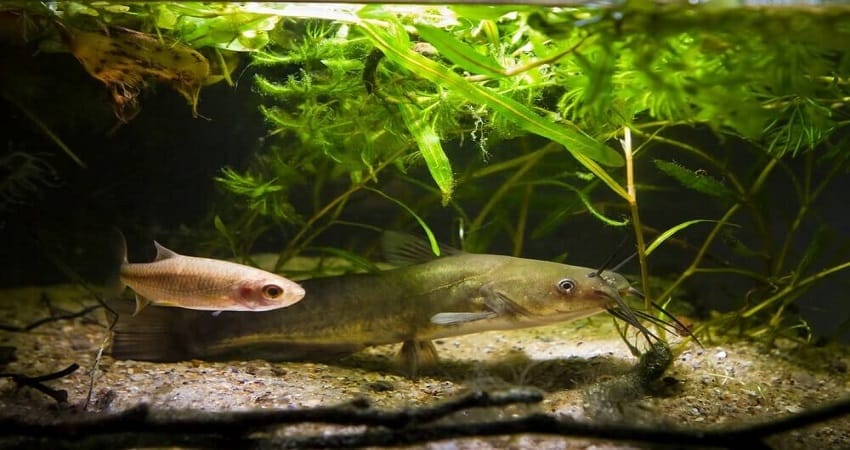
2. Hornwort Propagation
Hornwort can grow tiny buds in the wild that fall to the ground during the cold season and sprout once the weather warms up.
Cutting off a side shoot or trimming off the top of a tall stem is the most common form of propagation at home. If you let a segment of hornwort float to the surface or plant it in the dirt, it will quickly develop into a new plant.
One of the simplest ways to obtain hornwort is to inquire locally to see if any local hobbyists have any extra trimmings to share, which they are typically more than willing to do.
We don’t sell hornwort because it doesn’t ship well, but we do have a whole section of our favorite beginner plants for you to look at.
In An Aquarium, The Use And Benefits Of Hornwort
With its beautiful, feather-like leaves and vibrant green shades, the hornwort aquatic plant is versatile. Of course, they’re most often thought of as a decorative plant, which they are, but they add so much more to your goldfish aquarium than just aesthetics.
Hornwort is a fast-growing plant that can potentially aid in maintaining the aquarium’s water quality. How do you do it? Since it eats nitrates, it’s an excellent nitrate buffer.
It’s possible to have a fixed or floating Hornwort plant. Since floating is the closest to life in its natural environment, it can be a light dimmer for other plants and animals that need less light than their tank mates.
Hornwort is also an ideal hiding place for several shrimp and fish. It’s instrumental in community tanks for assisting baby fish through the maturation process.
Of course, this lovely plant provides some significant aesthetic value. It sways with every current in the tank and adds some bright color and texture to the overall look.
Like other aquatic plants, Hornwort aerates the water in fish tanks by producing oxygen and removing the fish’s carbon dioxide.
It can also minimize algae growth and enhance overall water quality in the aquarium by removing waste and nitrogen compounds, essentially serving as a natural filtration device for your aquarium.
Frequently Asked Questions
What is the best way to grow hornwort?
Hornwort is extremely simple to grow. It will develop side shoots from the main stem to pinch off to grow another complete plant. You may also break off parts of the main stem, and both can develop into complete plants.
When it comes to hornwort, how long does it take to grow?
Hornwort will quickly grow 1-4 inches (3-10 cm) per week if given enough light and nutrients. Aquarium snails are detritivores, meaning they consume dead leaves and other organic material rather than healthy plants.
Is hornwort dormant in the winter?
This pond plant dies back in the fall, only to reappear in the spring with new growth. One of the most common oxygenating plants is that it looks good and helps keep your pond clean. They die back in the winter, but they are fully hardy and will reappear.
Is it challenging to grow hornwort?
Hornwort is a relatively easy plant to grow, and it is known for its rapid growth. While it can be planted in the substrate, it will eventually lose its bottom leaves, which will not look good.
Is it possible for hornwort to grow roots?
Hornwort doesn’t have any origins. Through its stems and leaves, it absorbs nutrients directly from the water column. It’s a vital habitat feature in the wild, as it allows small fish and fries to hide from predators.
Conclusion
Hornwort is a low-maintenance plant that is likely to flourish in your aquarium. It’s a hardy herb, so it’s better for beginners. It serves several purposes, including enhancing the protection of young fry and reducing fish waste and algae levels.
Its ability to float makes it a unique point of interest for surface-dwelling fish, while planted alternatives protect fish at lower levels. They will make an appealing addition to most aquariums if you are willing to trim the stems regularly to prevent them from dominating the tank.






